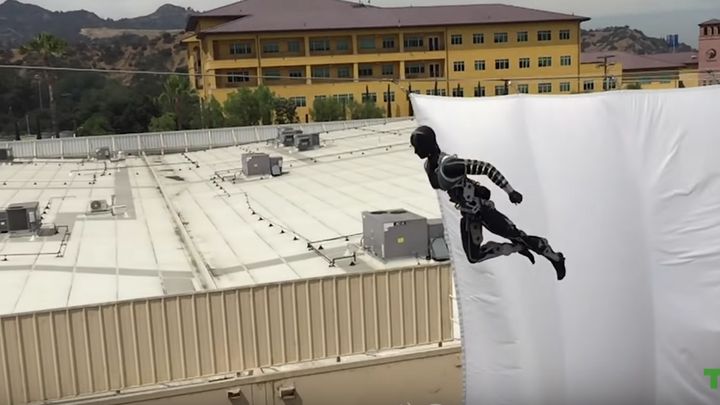Disney's Robo-stuntmen May be the Future of Action Movies
Researchers from Disney Research plan to implement a project called Stuntronics. The gist of it are animatronic robots, performing complex aerial stunts.

In 2018, Disney shared its latest invention to help shoot complex action scenes in high-budget films. We're talking about Stuntronics, which are robots able to perform a lot of stunts, like jumping an entire building in a few seconds. The project is already in the testing phase, and its true capabilities are presented in the video below:
The advantages and disadvantages of the robots have been analysed very carefully on TechCrunch. Despite their appearances, they are very static machines, designed to jump from point A to point B, and make some acrobatic figures on the way. In their movements they resemble superheroes, so Marvel Cinematic Universe can get another tool to make its movies more attractive. TechCrunch asked Morgan Pope about the project, one of the scientists at Disney Research, and received the following answer:
“Often our robots are in the uncanny valley where you got a lot of function, but it still doesn’t look quite right. And I think here the opposite is true. When you’re flying through the air, you can have a little bit of function and you can produce a lot of stuff that looks pretty good, because of this really neat physics opportunity — you’ve got these beautiful kinds of parabolas and sine waves that just kind of fall out of rotating and spinning through the air in ways that are hard for people to predict, but that look fantastic.”
Okay, it's been 2 years since then, so how is the technology doing now? On July 18, during the Avengers Campus event, Disney wanted to present the stunt robots in action. It was there where the machines were supposed to impersonate Spider-Man and perform stunts typical of the character, i.e. traveling across roofs and web swinging. Due to the coronavirus pandemic the presentation could not take place as planned. You can learn about the details of the show here.
- Disney accused of ''stealing'' fan film choreography for Star Wars Visions
- „It depresses me.” Benedict Cumberbatch is afraid of AI and believes that because of it „we are in danger”
- Stranger Things 5 will see the most violent death in the entire series. Until now, the Duffer brothers have „refrained” from showing such violence in the Netflix hit
0

Author: Karol Laska
His adventure with journalism began with a personal blog, the name of which is no longer worth quoting. Then he interpreted Iranian dramas and the Joker, writing for cinematography journal, which, sadly, no longer exists. His writing credentials include a degree in film studies, but his thesis was strictly devoted to video games. He has been writing for Gamepressure since March 2020, first writing a lot about movies, then in the newsroom, and eventually, he became a specialist in everything. He currently edits and writes articles and features. A long-time enthusiast of the most bizarre indie games and arthouse cinema. He idolizes surrealism and postmodernism. He appreciates the power of absurdity. Which is probably why he also tried soccer refereeing for 2 years (with so-so results). He tends to over-philosophize, so watch out.
Latest News
- End of remote work and 60 hours a week. Demo of Naughty Dog's new game was born amid a crunch atmosphere
- She's the new Lara Croft, but she still lives in fear. Trauma after Perfect Dark changed the actress' approach to the industry
- „A lot has become lost in translation.” Swen Vincke suggests that the scandal surrounding Divinity is a big misunderstanding
- Stuck in development limbo for years, ARK 2 is now planned for 2028
- Few people know about it, but it's an RPG mixing Dark Souls and NieR that has received excellent reviews on Steam, and its first DLC will be released soon

